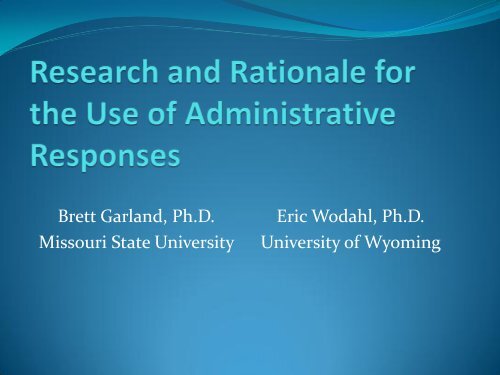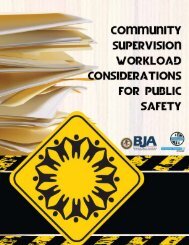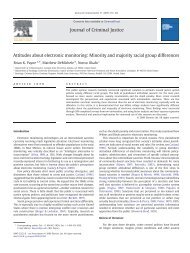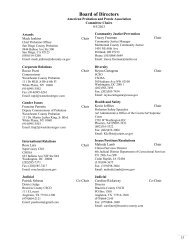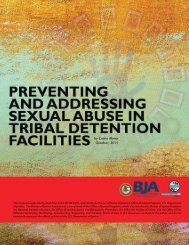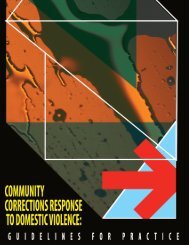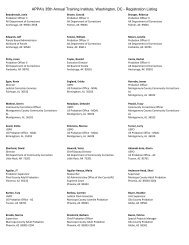Research and Rationale
Research and Rationale
Research and Rationale
- No tags were found...
You also want an ePaper? Increase the reach of your titles
YUMPU automatically turns print PDFs into web optimized ePapers that Google loves.
Brett Garl<strong>and</strong>, Ph.D.Missouri State UniversityEric Wodahl, Ph.D.University of Wyoming
• Behavior is learned• Changes in our environment• Positive/pleasurable changes - behavior will likely continue• Negative/unpleasant changes – behavior less likely to continue• Behavior can be changed/manipulated• Manipulation of the environmental consequences
• Reinforcements• Positive reinforcements – application of a pleasurablestimulus• Negative reinforcements – removal of an undesirablestimulus• Punishments• Positive punishments – application of an undesirablestimulus• Negative punishments – removal of a desirablestimulus
• Schools• Medical Professions• Employee Performance• Substance Abuse Counseling
• DC Superior Court Drug Intervention Program• Hawaii Opportunity Probation with Enforcement(HOPE)• Wyoming Intensive Supervision Program
General Compliance Approach• Focuses on general compliance with all conditions ofsupervision• Sanctions imposed for all instances of noncompliance• Reinforcements given for general compliance• Earned compliance credits/goodtime• Issues/Concerns• Certainty is a key component of operant learning• Relative importance of probation conditions• Maintaining a distinction between sanctions <strong>and</strong> rewards
Specific Behavior Approach• Apply sanctions <strong>and</strong> reinforcements to specificconditions of supervision• Getting <strong>and</strong> keeping a job• Attending treatment program• Controlling anger• Staying drug free• Issues/Concerns• High detection behaviors• Do we ignore other behaviors?
Risk <strong>and</strong> BehavioralApplications• Risk Principle• The level of supervision <strong>and</strong> treatment should becommensurate with the offender’s level of risk• Risk principle implies reinforcements <strong>and</strong> sanctionsshould be applied to higher-risk offenders• Low Risk <strong>and</strong> YAVIS Syndrome
Importance of Structured Discretion• Why discretion is essential?• Celerity• Behavior <strong>and</strong> consequence have to be linked in time• The effects of the consequence diminish exponentiallywith the passage of time• Why structure is essential?• Appropriateness of responses• Consistency of responses• Fairness
Perceptions Matter• We cannot assume that what is punishing for one isequally punishing for another; nor can we assume thatwhat is rewarding for one is equally rewarding foranother.• Wyoming ISP study• Offenders do not view jail as being substantially morepunitive than community based sanctions• Punitiveness of treatment oriented sanctions• Disconnect between offender <strong>and</strong> officer perceptions• More research is needed
Ratio of Reinforcementsto Sanctions• Reinforcements are more effective than sanctions atchanging behavior• Reinforcements <strong>and</strong> sanctions are most effective atchanging behavior when used in concert• Achieving at high reinforcement to sanction ratioprovides the best opportunity for success• 4:1 reinforcement to sanction incentive
Ratio of Rewards to Sanctions<strong>and</strong> the Probability of Success90%80%70%60%50%40%30%20%10%0%Ratio of Rewards to Punishments
Collateral Issues• Collateral benefits of reinforcements <strong>and</strong> sanctions• Change officer behavior• Improved offender/officer relationships• Be realistic of expectations• Can we expect sanctions <strong>and</strong> reinforcements to result inlong-term behavioral change?


